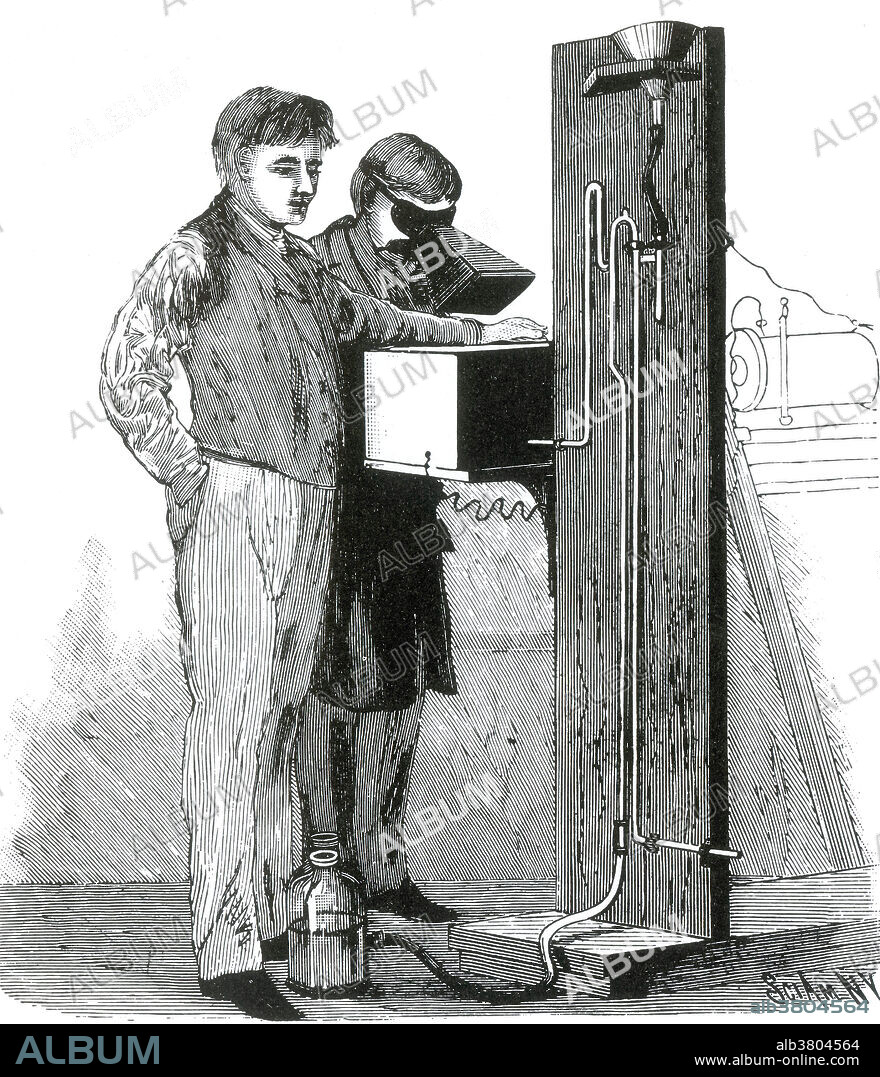alb3804564
Edison's X-Ray Apparatus, 1896

|
Ajouter à une autre Lightbox |
|
Ajouter à une autre Lightbox |



Avez-vous déjà un compte? S'identifier
Vous n'avez pas de compte ? S'inscrire
Acheter cette image.
Sélectionnez l'usage:

Titre:
Edison's X-Ray Apparatus, 1896
Légende:
Voir la traduction automatique
In 1895, Thomas Edison investigated materials' ability to fluoresce when exposed to X-rays, and found that calcium tungstate was the most effective substance. In 1896, the fluoroscope he developed became the standard for medical X-ray examinations. He dropped X-ray research around 1903, even before the death of Clarence Madison Dally, one of his glassblowers. Dally had a habit of testing X-ray tubes on his hands, and acquired a cancer in them so tenacious that both arms were amputated in a futile attempt to save his life.
Crédit:
Album / Science Source
Autorisations:
Taille de l'image:
3350 x 3900 px | 37.4 MB
Taille d'impression:
28.4 x 33.0 cm | 11.2 x 13.0 in (300 dpi)
Mots clés:


 Pinterest
Pinterest Twitter
Twitter Facebook
Facebook Copier le lien
Copier le lien Email
Email
